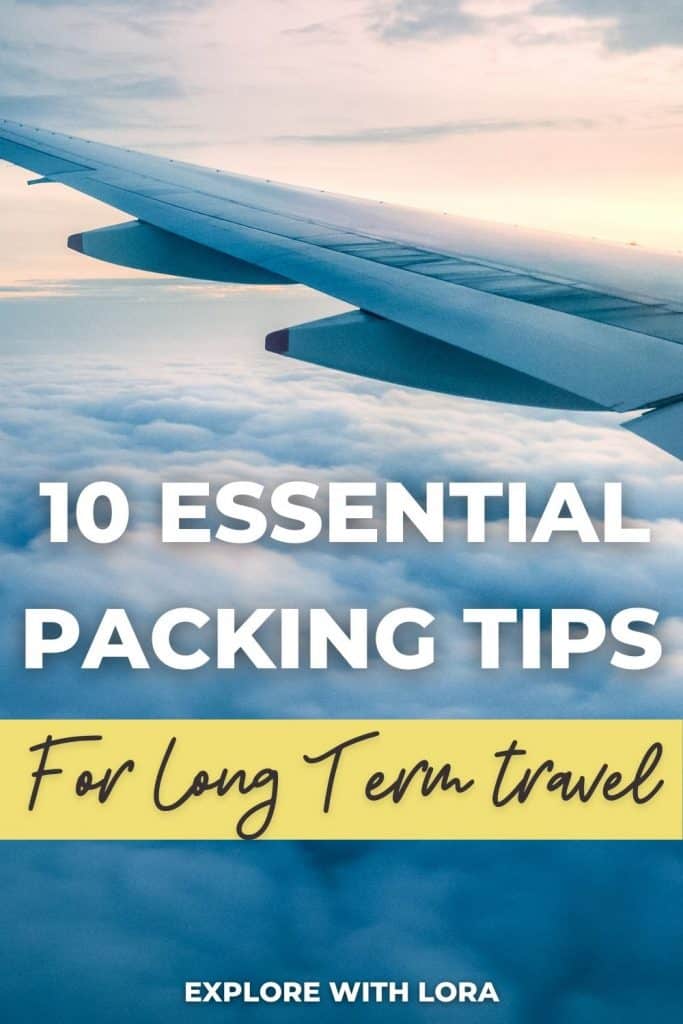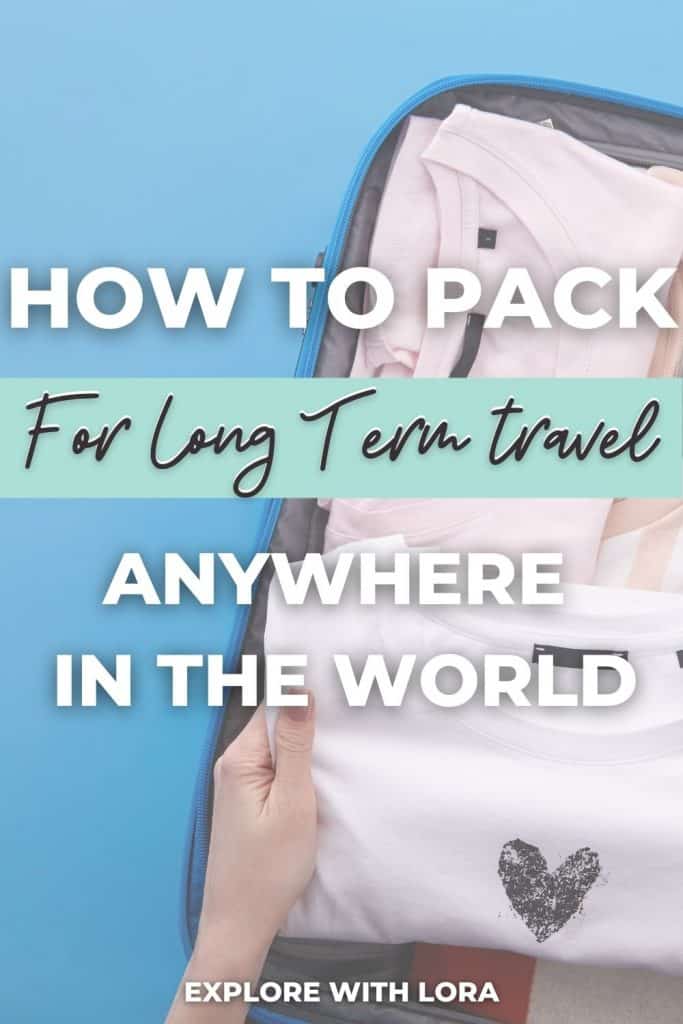This post may contain affiliate links. By clicking and making a purchase through the links, I earn a small commission at no extra cost to you. See my disclaimer for more information. This and display ads allow me to keep the site up to date and give back.
Packing for long-term travel can feel completely daunting. Overpacking can mean that you are lugging around too much, and underpacking could mean spending more money than you had planned on.
Over the experience I’ve gained in the last decade of traveling, here are some packing tips for long-term travel to make it as stress-free as possible. Whether you’re a digital nomad or a backpacker, these tips will help prepare you to hit the road long-term.
1 – Pick the right luggage
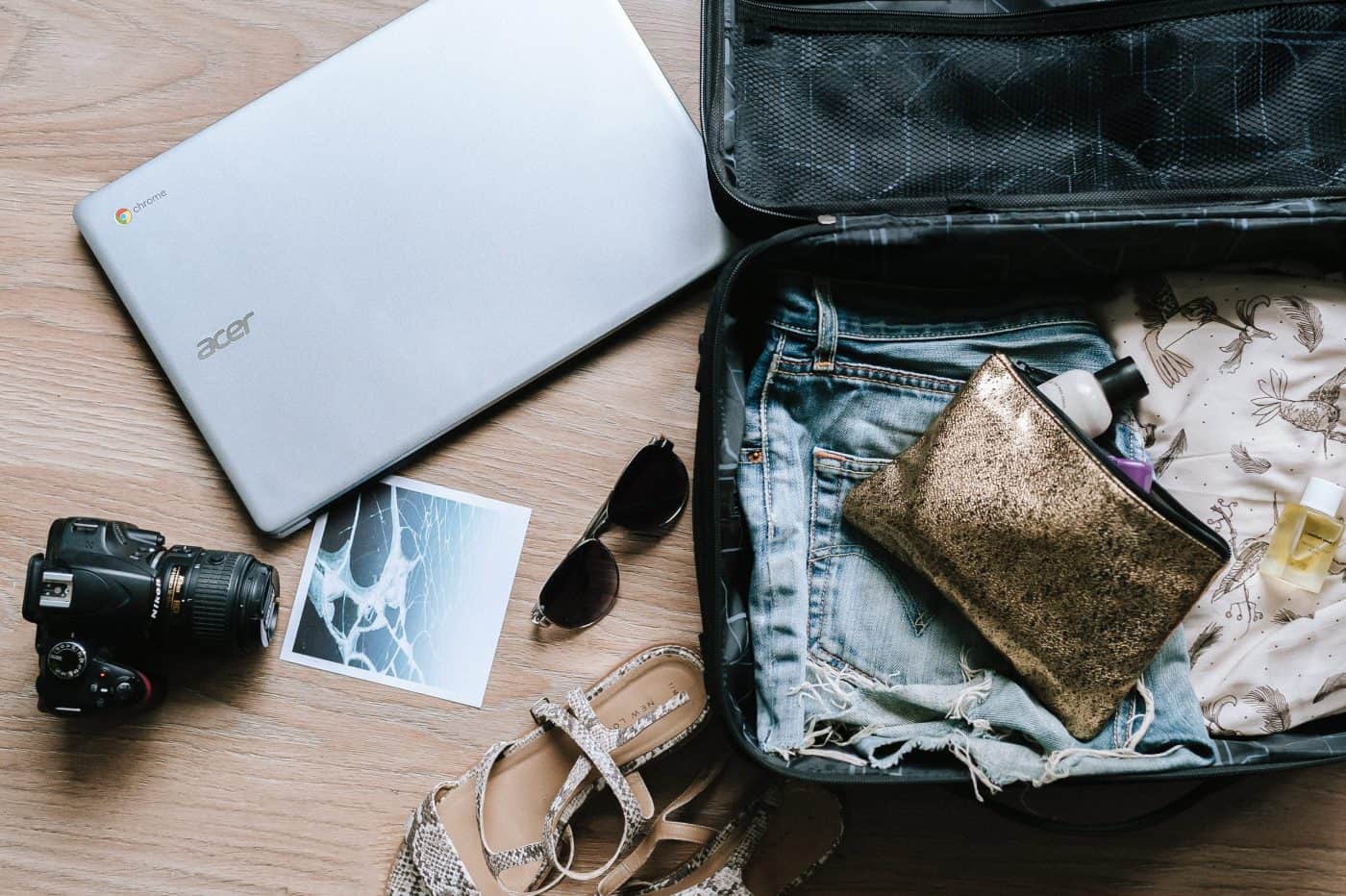
You’ll need to decide if you want to bring a suitcase or backpack with you on your long-term travels – and what size. I’m all about the backpack for long-term travel, which seems to be the case for 99% of the other backpackers I meet. Suitcases aren’t so useful once you get away from the smooth airport floor.
When I went on my one-year round-the-world trip, I brought a 75l backpack with me (along with a smaller backpack for all my camera gear), and it became the bane of my existence. The girl even warned me at the store that the bag would be too big for my frame if I filled it, but I didn’t listen. And of course, I filled it with things I didn’t need and could barely lug the thing around. I had to get people to help me put it on at hostels!
When I got back from that trip, I decided that I needed to downsize, and after hours of research, purchased this backpack. It was one of the best decisions I’ve ever made. 40L is so much more manageable, and I don’t miss the extra space.
I love having a 40L bag because it’s considered carry-on sized by many airlines, so I don’t have to pay extra baggage fees when I fly (unless it’s a small crap airline like Ryanair). If you plan to fly a lot, the cost of adding an extra travel bag can really add up, so this is something to consider when choosing your travel bag!
Either way, you’ll want to spend some time picking the right backpack for you. Adequate back support is important, and your bag is not something you want to cheap out on. Try to find one with a good warranty as well. Nomatic has already replaced my backpack for me once for no charge!
Along with your backpack, you’ll want to bring a smaller 20l-30l lightweight daypack to compliment it. This will be what you bring as your carry-on, where you store your valuables, and what you take on day trips with you. I have this hiking backpack, which is designed for carrying camera gear. It’s the perfect adventure companion!
I’ve met a few backpackers who travel with JUST a 30l bag. As much of a dream as this sounds for getting around, I wouldn’t be able to do it. I need a bag that size for my camera gear alone, and I like to have more than 3 outfits. But if you’re a minimalist, then this approach will make your travels very easy.
2 – Make a packing list
It might sound a bit much to make a packing list, but it really helps you only pack what you need and not miss anything. What you pack will depend on the climate, the activities you’re going to be doing, the trip duration, and any cultural norms.
Try and pack light. You will be carrying everything around with you when you go from place and place, which can become really annoying if your bag is heavy. Plus, if you can travel with carry-on-sized bags, this can save you a lot of money if you’re frequently flying, as many airlines will charge you for a checked bag.
Making a packing list helps keep you organized; otherwise, you’re mind may get confused and throw everything into a bag including that pair of pants you haven’t worn in 3 years.
Generally, I take just over a week’s worth of clothes with me no matter where I go because it helps keep my bag light and allows me to pick up a few things along the way. Remember, laundry is available everywhere! When packing, bring versatile items that you can use for multiple purposes – more on that below.
If you need some inspiration, you can grab a free packing list in my dream trip planner here!
3 – Bring versatile items
When packing for long-term travel, try and pick items that can be used in various settings. For example, shorts that can be used for walking around town and going out to a bar. You’ll also want to make sure the clothes you bring are decent quality, as they will take a beating being worn so much (hint: H&M tank-tops develop holes VERY quickly).
Bring at least one nice outfit, as you will have the opportunity to go to many bars/restaurants when traveling the world, and it’s not the best feeling showing up to these in your hiking boots and north face fleece. I know this from personal experience.
If you’re traveling in tropical climates, a handy item to bring is a towel/sarong that can be wrapped around as a dress. This can also double as a privacy sheet at hostels, a scarf in cold climates, or a blanket on cold bus rides. It’s probably one of the most useful items I have with me! If you don’t have one, you’ll most certainly find one to buy in any tropical destination.
4 -Bring base layers
If you’re going to be traveling around various climates that include some chilly ones, then you’ll definitely want to bring some merino wool base layers. I went from Central America’s beaches to Patagonia’s snowy mountains on my round-the-world trip, and having the base layers made all the difference while I was trekking there.
Merino wool wicks moisture away from the skin while hiking, which helps you stay dry and warm. Plus, it’s lightweight and compact so these items are easy to store away in your luggage when you’re not using them! This is one item I always pack for long-term travel.
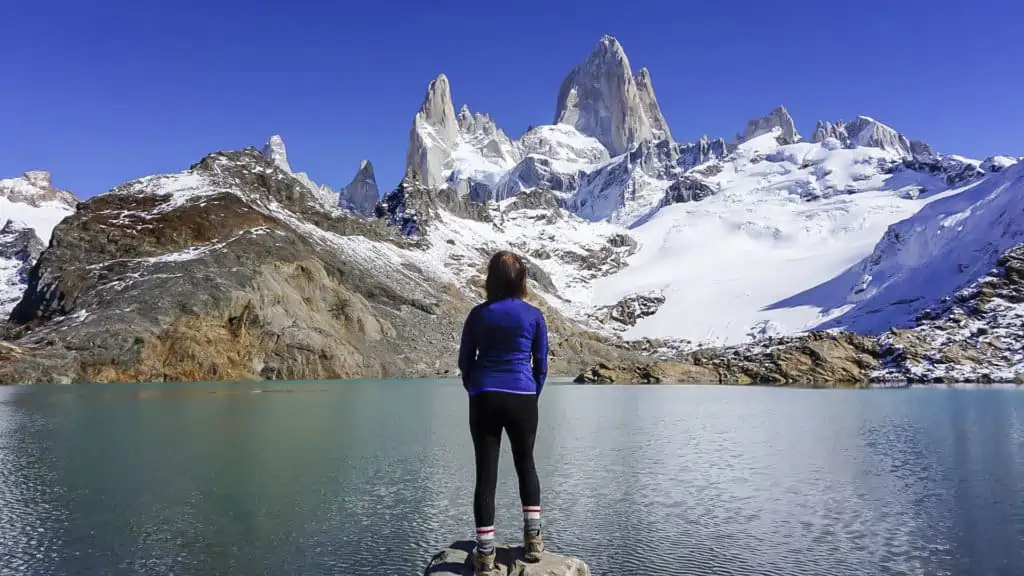
5 -Packing cubes are your best friends
I don’t know how I lived without packing cubes before I started using them! These handy cubes are one of the best things to pack for long-term travel.
Backpacks typically don’t have a lot of internal organization, so packing cubes can really help keep your clothes organized. They also compress them so that you can fit more into your bag!
There are also vacuum bags, which compress your clothes even further by squeezing the air out and sealing the bag, but I would only use these for the items you know you won’t always need (like cold weather clothes), otherwise they can be annoying to use.
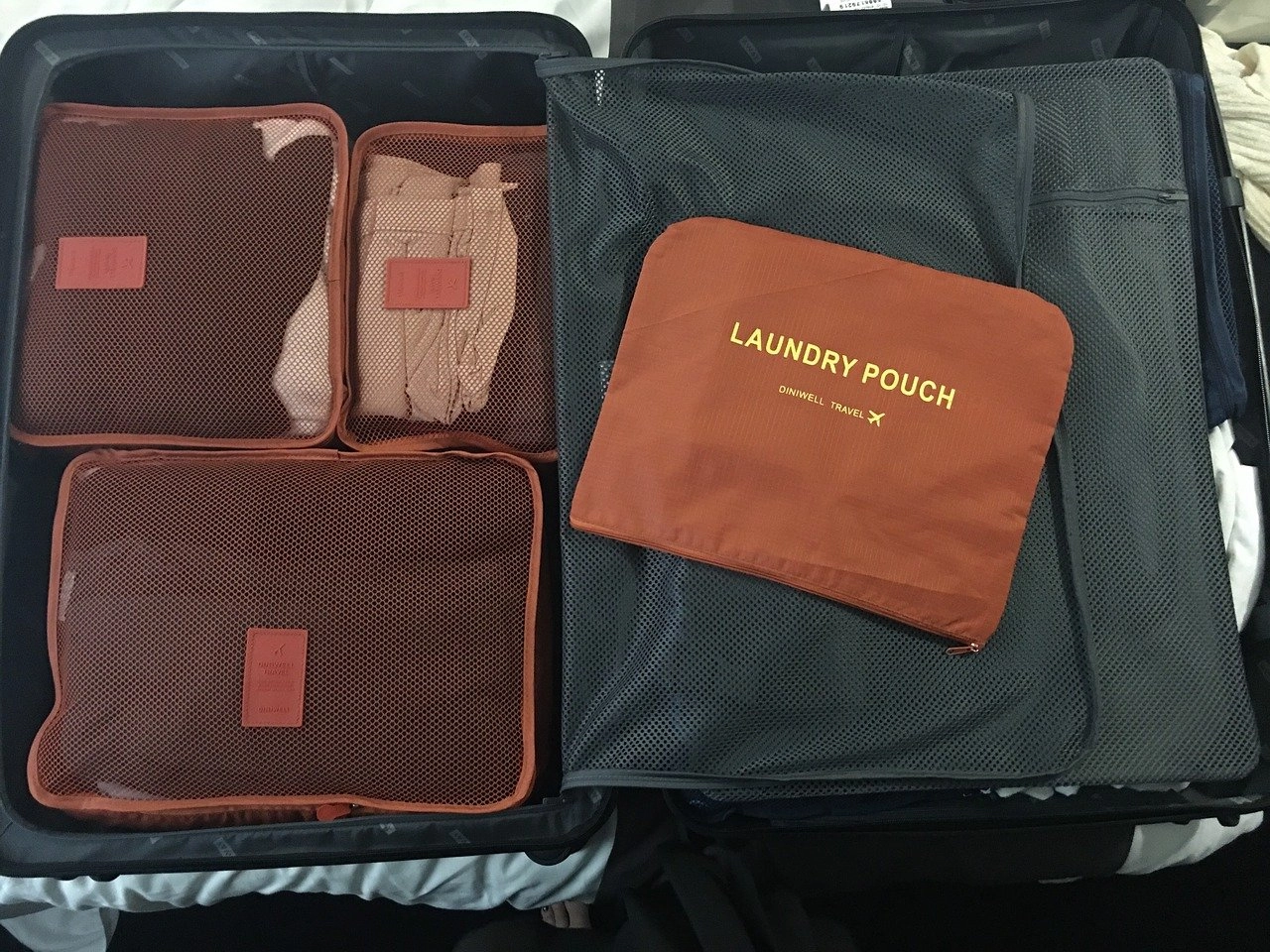
6 – Laundry bags are key
When your dirty and clean clothes live in the same place, it’s essential that you keep the stuff that truly smells away from your clean ones. While many backpackers use plastic bags for this, these will need to be replaced often, and that’s terrible for the environment. Plus, you do NOT want to be that person rustling through their plastic bags in the dorm at 4 am.
Instead, get a reusable travel laundry bag before you go. I use this bag, which comes with the Nomatic 40L backpack. I love it because it folds up small when I’m not using it, has a breathable mesh design, can be hung up, and is designed to fit in the bottom of the bag so I can keep my smelly clothes separated.
7 – Keep your valuables safe
You’ll have to decide where you want to store your valuables and important travel documents. When I’m in transit with all my luggage, I always keep my valuables in my daypack with me.
Once I arrive at the hostel, I store them away in a locker. I use this lock, which can also be used to protect your daypack from theft if you’re walking around with valuables My main backpack has my clothes in it and a photocopy of my passport and other important travel documents, just in case.
I’ve met some backpackers who store extra cash hidden away in their main luggage, but I’ve also heard many horror stories of money getting stolen by airport staff, so this isn’t something I do.
8 – Bring a luggage scale and tag
If you want to save yourself some baggage fees, never guess how much your bags weigh. It’s a small thing, but investing in luggage scales can be an excellent idea. You can take it with you, so you know what your luggage weighs anytime on your journey, and there are no surprises at the airport.
Once while flying from Colombia to Peru on a budget airline, they wouldn’t take my bag because it was a few pounds over the weight limit. I ended up having to put on half my clothes at the gate to get it under the weight, and the agent was not impressed with my determination. It’s much easier to figure this out in the comfort of your room rather than at an airport terminal!
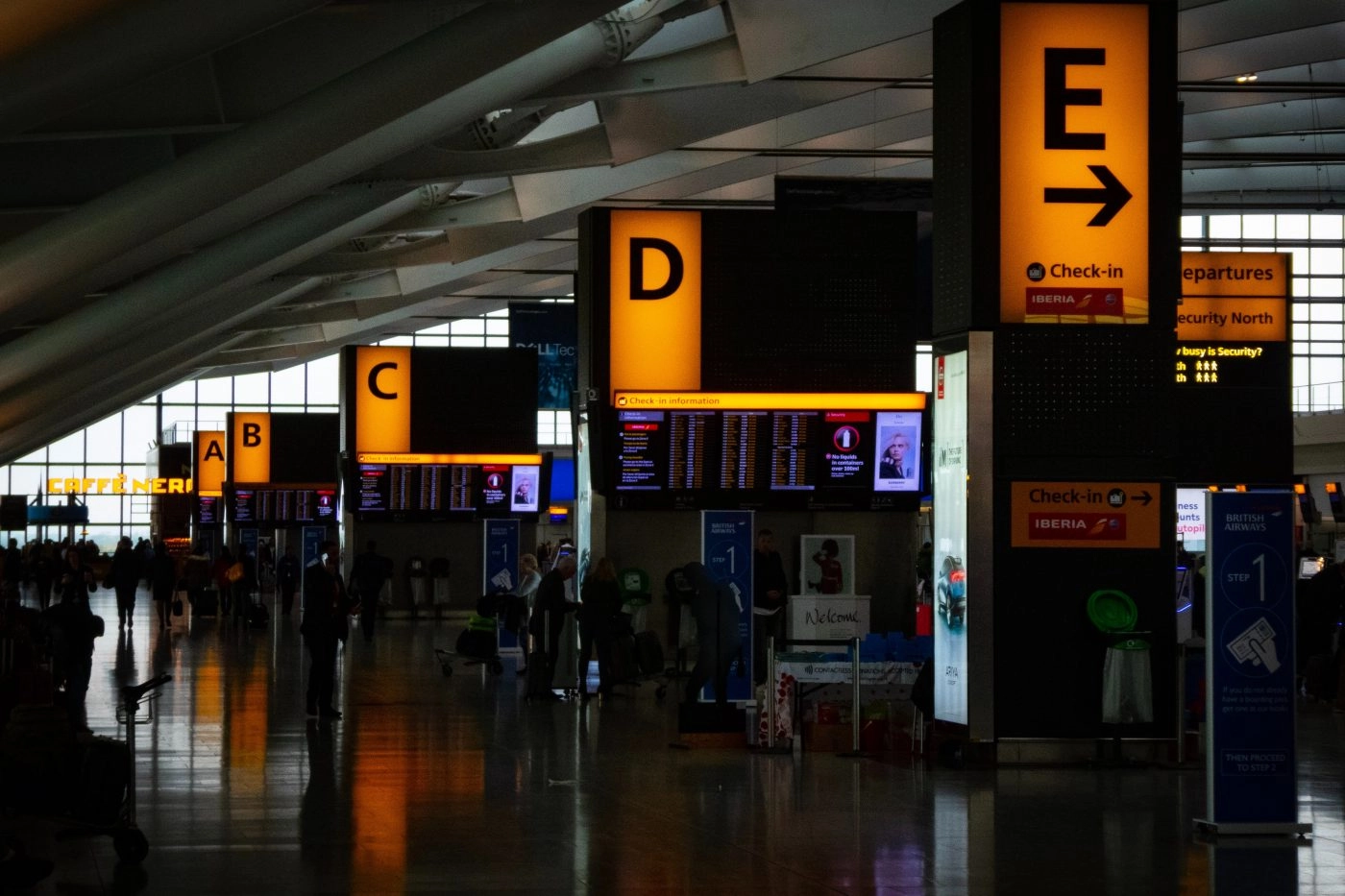
It’s also a good idea to make sure you’re bag is clearly marked if you want to reduce the chance of your luggage being taken by someone else at the baggage claim. These travel-inspired luggage tags are cute!
9 – Keep your tech safe and organized
I keep all my tech and camera gear in my day-pack, just in case something happens to my main one while it’s stored on a plane or on top of a bus (yes, this is often where your bag gets puts while backpacking). Even if you don’t have 50 cameras like myself, you’re most likely traveling around with a decent amount of technology in today’s today and age.

If you have a laptop, you’ll definitely want to make sure that your daypack has a dedicated laptop sleeve for keeping it secure. Cords can become a nightmare when they get tangled up in a bag, so if you’re traveling with a couple of chargers, then keep them organized in an organizer like this one.
Another essential item for long-term travel is an international plug converter that can fit any socket. This way you only have to carry one, and you’ll be good to go no matter where you are in the world! As a bonus, it comes with 4 USB ports, which is so helpful for charging multiple electronics or once – or for keeping the peace in hostel forms where there’s only one socket.
As much as I love holding a good book, they are one of the most impractical things you can take traveling in terms of weight. Instead, get an e-reader before you go and download all your favorite books on it. You’ll really appreciate this on long bus rides!
I always travel with a portable battery bank that can charge my tech no matter where I am. This one is great as it has 22000 mAh of power when fully charged, allowing you to charge your electronics multiple times. This is so handy on long bus rides or if you’re spending some time away from civilization in the amazon rainforest.
I highly recommend buying travel insurance for your personal belongings if you’re traveling with a lot of high-value items. I made the mistake of not doing this once and had everything stolen in Iceland – the safest country in the world! I use and love World Nomads.
10 – You don’t need as many toiletries as you think
If there’s one thing I consistently overpack, it’s toiletries. I don’t know where I think I’m going, but I always bring a ton of makeup, most of which I never end up touching. You’ll be spending most of your time outside in nature on sweaty hikes or in the ocean, so you won’t even want to wear makeup. For the nights that you do go out, a little goes a long way.
As for the other toiletries like shampoo and body wash, I travel with these small portable bottles and refill them as needed, as large bottles take up too much space and can potentially explode all over your belongings.
Always store your toiletries in a separate bag to avoid this from happening! I use this toiletry bag – it has several compartments and is made by the same company as my travel bag, so it fits perfectly inside it.
What’s important to remember is that you can easily pick up most toiletry items no matter where you are in the world, so don’t worry about bringing every last one with you.
—
Do you have any other packing tips for long term travel? Let me know in the comments below!
Enjoyed this post? Pin it for later!
